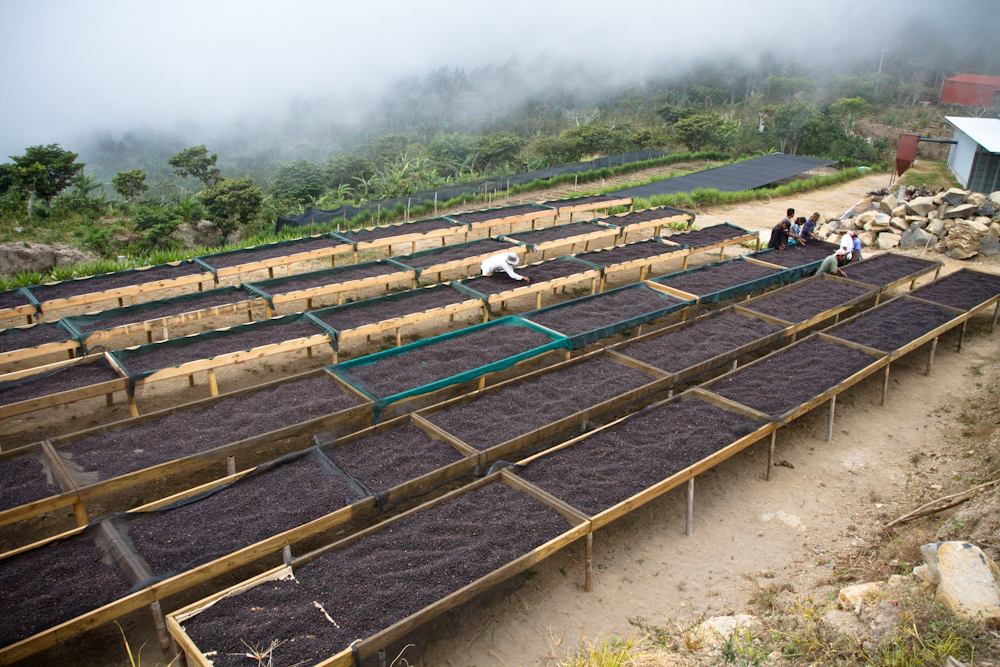What are the taste and flavor characteristics of Aharal coffee? Ethiopian coffee producing area

Professional coffee knowledge exchange more coffee bean information please follow the coffee workshop (Wechat official account cafe_style)
What are the taste and flavor characteristics of Aharal coffee? Description of Coffee Mocahara in Ethiopia Coffee producing area?
Coffee is already a necessary drink for many people every day. If there are pesticide residues in coffee, it will be harmful to human health if it accumulates for a long time. Therefore, consumers with a sufficient budget will specialize in buying organic or sustainable coffee beans, but if the budget is insufficient, don't they have to take care of their health? That's right! In fact, there are several producing areas in the world that almost do not use pesticides. Hey, hey-- the petty bourgeoisie can enjoy coffee at ease!
Ethiopian coffee has a global market share of 5% and is the fifth largest coffee producer in the world. This is where the familiar Arabica coffee originated, and Ethiopia also has the most diverse variety of coffee. There are so many native species that the number is not clear, it is estimated that there are 6,000 to 7,000 unknown varieties of coffee.
Ethiopia itself has many high mountains, which are tropical cloud forests, and coffee is mainly grown on the plateau. The largest number of rainforest is tall trees, coffee trees with these trees as canopy, fallen leaves as root nutrients, enjoy an excellent growing environment. On the other hand, the temperature at high altitude is lower, so there are fewer insect pests, less pesticides are needed, and the ripening rate is slower, so coffee trees can take longer to absorb nutrients.
The diversity of the original species of coffee, after long-term elimination, natural hybridization, so strong resistance, where does the need for pesticide protection? Although the amount of coffee produced in Ethiopia is huge, 98% of the coffee growers are small farmers, with a total of about 700000 households. The economic situation of small farmers is poor and local infrastructure is inadequate, so even if they want to buy pesticides, it is not as easy as in advanced countries.
After understanding the reasons why Ethiopia does not need pesticides, the editor will also sort out the coffee characteristics of various Ethiopian coffee producing areas as a small guide for you to buy coffee in the future!
Sidamo producing area
Sidamo is located in southern Ethiopia, the landscape is changeable, coffee flavor is also ever-changing, sometimes fruity, citrus, sometimes nutty, herbal, bright acidity. Sidamo Coffee used to include Yirgacheffe and Guji. But the ECX trading system has separated Yejia Sheffield and Guji from Sidamo.
Yega Xuefi (Yirgacheffe) producing area
This small area, which used to be located in Sidamo, grows some of Ethiopia's top coffee beans, the most famous of which are traditional washing and have a unique jasmine and citrus flavor. and form the popular "Yejasuefei" flavor. This flavor has become the target of competition among boutique coffee lovers all over the world, so it is becoming more and more expensive. In addition, in recent years, it has become popular to insolate Yega Xuefei, and its flavor is even better than that of traditional water washing.
Producing areas of Lekempti, Wellega and Gimbi
Located in western Ethiopia, coffee beans in these areas are washed and tanned, top coffee beans and Sidamo are sweeter than Yega Sheffield, and citrus acidity decreases, adding more drupe aromas.
Limu and Djimmah producing areas
Located in western Ethiopia, Lim Coffee is the representative of washing treatment, while Gemma is a model of sun treatment, with a milder flavor than Sidamo and a wide variety of choices.
Harrar producing area
Ethiopian coffee is mostly produced in the west and south, while Hara is one of the few coffee produced in the east. The climate of this region is mainly hot and dry desert climate, so the coffee flavor is quite unique. The Arabica coffee produced here is the oldest kind of coffee in the world and is mainly grown on its eastern plateau. After washing and sun-drying, farmers hand-select the best quality raw beans for sale.
Ethiopia's wild coffee trees are home to coffee beans grown in Arabica all over the world. Ethiopia is located in the middle of the equator and the Tropic of Cancer and is neighboring Kenya, Sudan, Somalia and Djibouti. Unlike other African countries, Ethiopia has always maintained its independence and has not been ruled by European countries.
Arabica coffee was first found in Ethiopia's Kaffa province and was transplanted to Yemen in the 14th century and was discovered by the Dutch. The Dutch also brought coffee seeds to Ceylon, Indonesia and other places in the 17th century.
So far, the planting method has not changed much. Most coffee trees are still planted in the most primitive wild way. The main planting areas include Harrar, Sidamo, Yirgacheffe,Djimma and Gimbi. Longberry Haar is similar to mocha and is usually used to replace mocha, also known as Isopia Haramoca. Haramoca is mainly sun-dried. It has high acidity, full-bodied, mild, strong taste, high yield and pleasant aroma. Another producing area, Yirgacheffe, is washed with water and has a charming flower aroma and a variety of sour flavors such as lemon. As for wild Arabica coffee trees still growing in Djimma and Gimbi in the southwest, coffee beans are picked up directly from the ground. In recent years, attention has been paid to improving the methods of harvesting and handling beans, and coffee production has also expanded. However, coffee beans produced by wild coffee trees are still washed with wood mortar and other primitive methods.
The grade of Ethiopian coffee is distinguished by the number of defective coffee beans.
Grade 1 = 0Murray 3 defective beans (per 300g raw beans)
Grade 2 = 4 Murray 12 defective beans (per 300g raw beans)
Grade 3 = 13 Mel 25 defective beans (per 300g raw beans)
Grade 4 = 26 Mel 45 defective beans (per 300g raw beans)
Grade 5 = 46 Mel 90 defective beans (per 300g raw beans)
Grades 1-3 are washed beans, and grades 4-5 are sun-treated beans.
Product name: Haramoka Ethiopia Star Harra Grade4, Ethiopia
Baking: Hottop city (the first bean in the second explosion is 19, 39, and 30 ")
Grinding: medium (Little Eagle 3) 18g
Brewing: filter paper\ hand flushing
Amount of brewing: 360cc
Flavor analysis: dry aroma with a little wine flavor; wet fragrance to the nostrils; acid brightness obviously changed to slightly bitter sweet; with very rich flavor changes and long-lasting aftertaste
Dr. Harald, Ethiopia, Dr. Evil washing (Ethiopia Fully-Washed Harar Dr. Evil)
Producing area: Harald (Harar)
Producer: Duncan, owned by the Kotowa family
Variety: Heirloom
Baking degree: shallow baking
Altitude: 1900-2000 m
Treatment: washing
Flavor features: litchi, orange, jasmine, berries, sucrose, citrus acid
Introduction:
Best batch of Ethiopian washing in 2015
Similar to the intensity of Mini-me, but the flavor is more concentrated and purer and clear flavor trend.
After months of testing and screening of various samples, the well-known bean hunter Simon finally tested this super Ethiopia comparable to Mini-me!
The high altitude growth environment and the excellent genes of local native species, coupled with the farmers' careful selection of fully ripe coffee cherries for full washing treatment, let
This bean has excellent cleanliness and high fruit sweetness.
Important Notice :
前街咖啡 FrontStreet Coffee has moved to new addredd:
FrontStreet Coffee Address: 315,Donghua East Road,GuangZhou
Tel:020 38364473
- Prev

Hawaii kona Kona coffee bean flavor taste introduction Kona coffee how to brew tutorials to share
Professional coffee knowledge exchange more information on coffee beans Please follow the coffee workshop (Wechat official account cafe_style) Kona Coffee from Hawaii uses coffee beans that are grown on volcanic terrain. At the same time, there is a high density of artificial farming, so each bean can be said to be spoiled and worth.
- Next

Costa Rican Red Wine Solar | Aguirette three Brothers processing Plant, unique Red Wine Sun treatment
Costa Rica Tempranillo Costa Rica Red Wine fermentation Sun production area: West Valley production area treatment Plant: Arquette Brothers treatment Plant soil: volcanic soil altitude: 1600 m-1700 m Variety: Kaddura, Kaduai treatment: red Wine Sun fermentation 01 | A brief introduction to the production area Costa Rica is located in the Central American isthmus and is also affected by the Pacific Ocean,
Related
- Detailed explanation of Jadeite planting Land in Panamanian Jadeite Manor introduction to the grading system of Jadeite competitive bidding, Red bid, Green bid and Rose Summer
- Story of Coffee planting in Brenka region of Costa Rica Stonehenge Manor anaerobic heavy honey treatment of flavor mouth
- What's on the barrel of Blue Mountain Coffee beans?
- Can American coffee also pull flowers? How to use hot American style to pull out a good-looking pattern?
- Can you make a cold extract with coffee beans? What is the right proportion for cold-extracted coffee formula?
- Indonesian PWN Gold Mandrine Coffee Origin Features Flavor How to Chong? Mandolin coffee is American.
- A brief introduction to the flavor characteristics of Brazilian yellow bourbon coffee beans
- What is the effect of different water quality on the flavor of cold-extracted coffee? What kind of water is best for brewing coffee?
- Why do you think of Rose Summer whenever you mention Panamanian coffee?
- Introduction to the characteristics of authentic blue mountain coffee bean producing areas? What is the CIB Coffee Authority in Jamaica?

